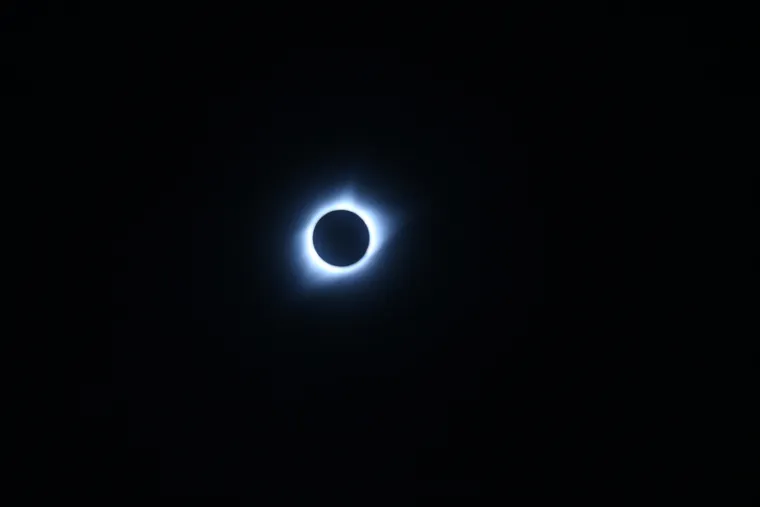By Alex Demas, USDA Forest Service Office of Communication
April 1, 2024 – Complete darkness, like the middle of the night—except it’s the middle of the day, and just moments before, the sun shone brightly. Total solar eclipses, like the one that will occur on April 8, are the stuff of legend. Once considered omens, signs of the gods or even the end of the world, we now know them to be the effect of the moon passing between the Earth and the sun in such a way that the moon’s shadow falls directly on the Earth.
With such a dramatic display expected, millions of people are likely to be looking for a prime vantage point. NASA estimates 31.6 million people live in the path of totality for the 2024 eclipse, with an additional 150 million people living within 200 miles of the path of totality. That is a lot of people likely to be on the move and looking for the best spots to see this once-in-a-lifetime event.
Prime Time Viewing On Your Public Lands
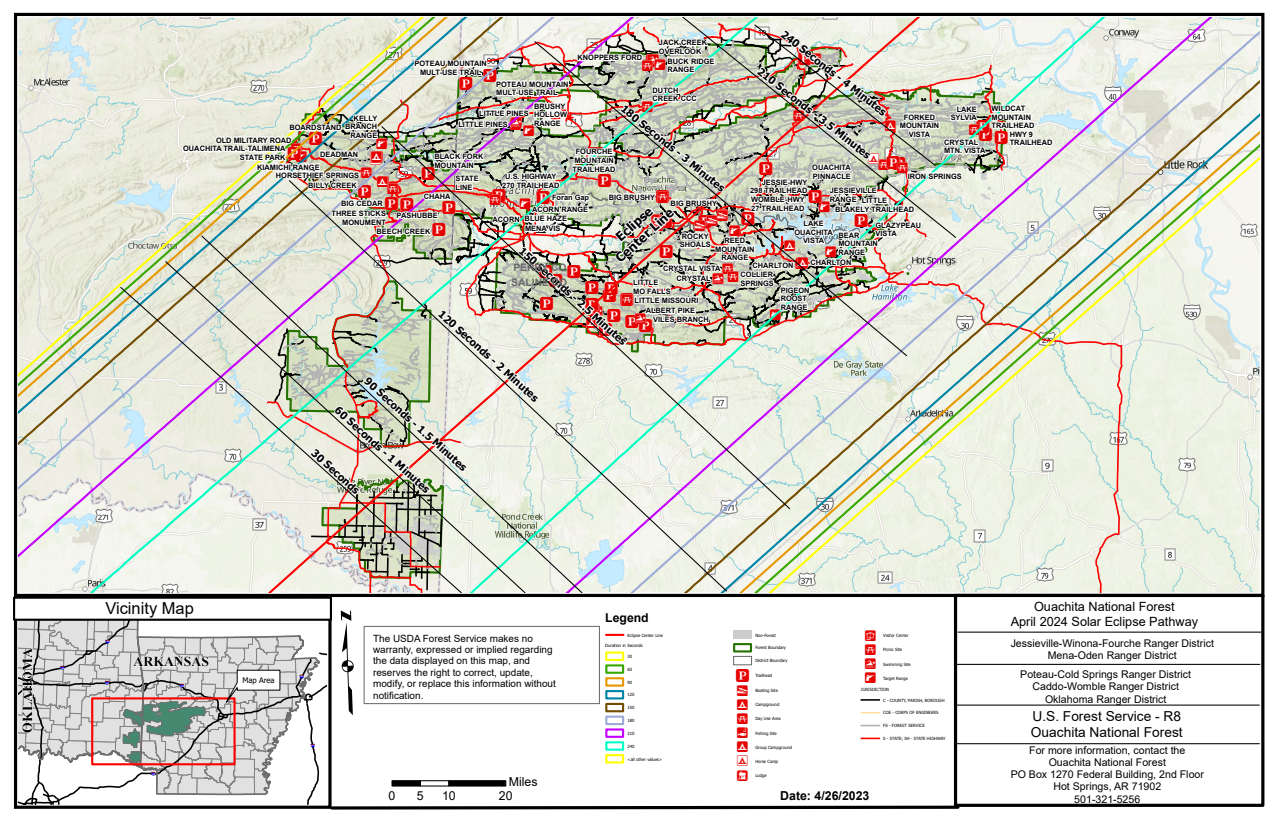
The USDA Forest Service is ready for them. Five national forests and two national grasslands are expected to be firmly in the path of totality, ranging from Texas to Indiana. Individuals at all seven locations have been working overtime to be ready for the expected influx of visitors.
“We’ve been planning since last year,” says Mary Wood, public affairs officer for the Ouachita and Ozark-St. Francis National Forests in Arkansas and Oklahoma, both of which will be in the path of totality. “We don’t often get opportunities like this during which the nation’s eyes will be on us, so we’ve been working hard to make sure our guests have the best possible experience.”
The national forests and grasslands in the area of totality will be open and expect thousands, even tens of thousands, of possible visitors. In fact, the Ozark-St. Francis National Forests are headquartered in Russellville, Arkansas, where NASA will be hosting its live broadcast of the eclipse. As a result, Russellville alone is expecting more than 100,000 visitors.
“With all those people coming, our focus has been on preparing campsites, updating maps and identifying locations for people to spend the day while watching the eclipse,” Wood explains. “We’re even going to be keeping many of the forest offices and visitor centers open extra hours the weekend leading up to the eclipse.”
Once In A Lifetime, Twice
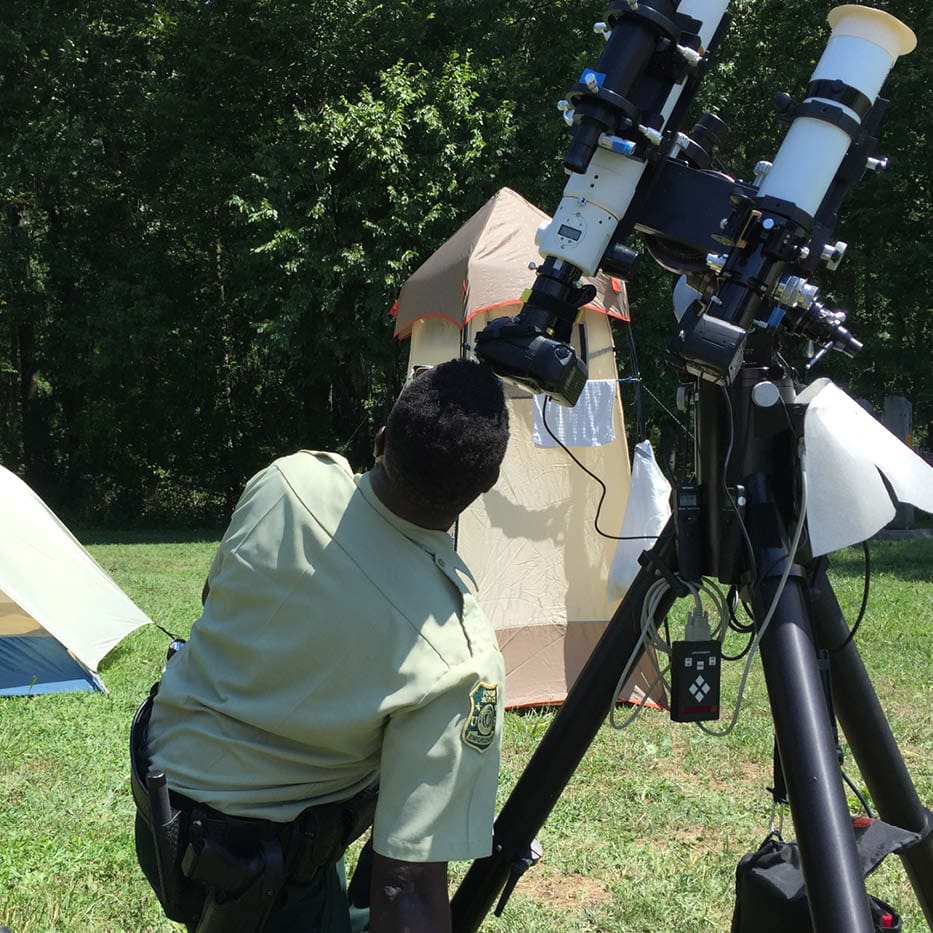
Although solar eclipses are fairly common, with several happening each year on average, total solar eclipses, where the moon completely covers the sun and blots out all light in an area, are relatively rare. They are often considered a once-in-a-lifetime occurrence, with the next one in the United States not anticipated until 2044. However, at Shawnee and Mark Twain national forests in Illinois and Missouri respectively, this is the second total solar eclipse this century after the 2017 eclipse passed through.
“The eclipse in 2017 was a lesson in setting expectations and preparation,” says Samantha Stoffregen, public affairs officer at the Shawnee and Hoosier National Forests. “We had no idea so many people would come, and it’s only going to get bigger for us, since just a part of Shawnee was in totality in 2017, but more than 95% of the forest will be in totality this year.”
Indeed, Shawnee National Forest learned from 2017 and also has been preparing for the past year, with the team even identifying previously closed campgrounds that could be reopened for the eclipse and, through blood, sweat and tears, getting them ready for prime time on April 8.
Although things were not as hectic next door at Missouri’s Mark Twain National Forest, public affairs officer Cody Norris remembers the 2017 eclipse well. “You know, I don’t know anyone that has seen an eclipse in person and said later that it wasn’t a big deal,” he says, recalling his own experience.
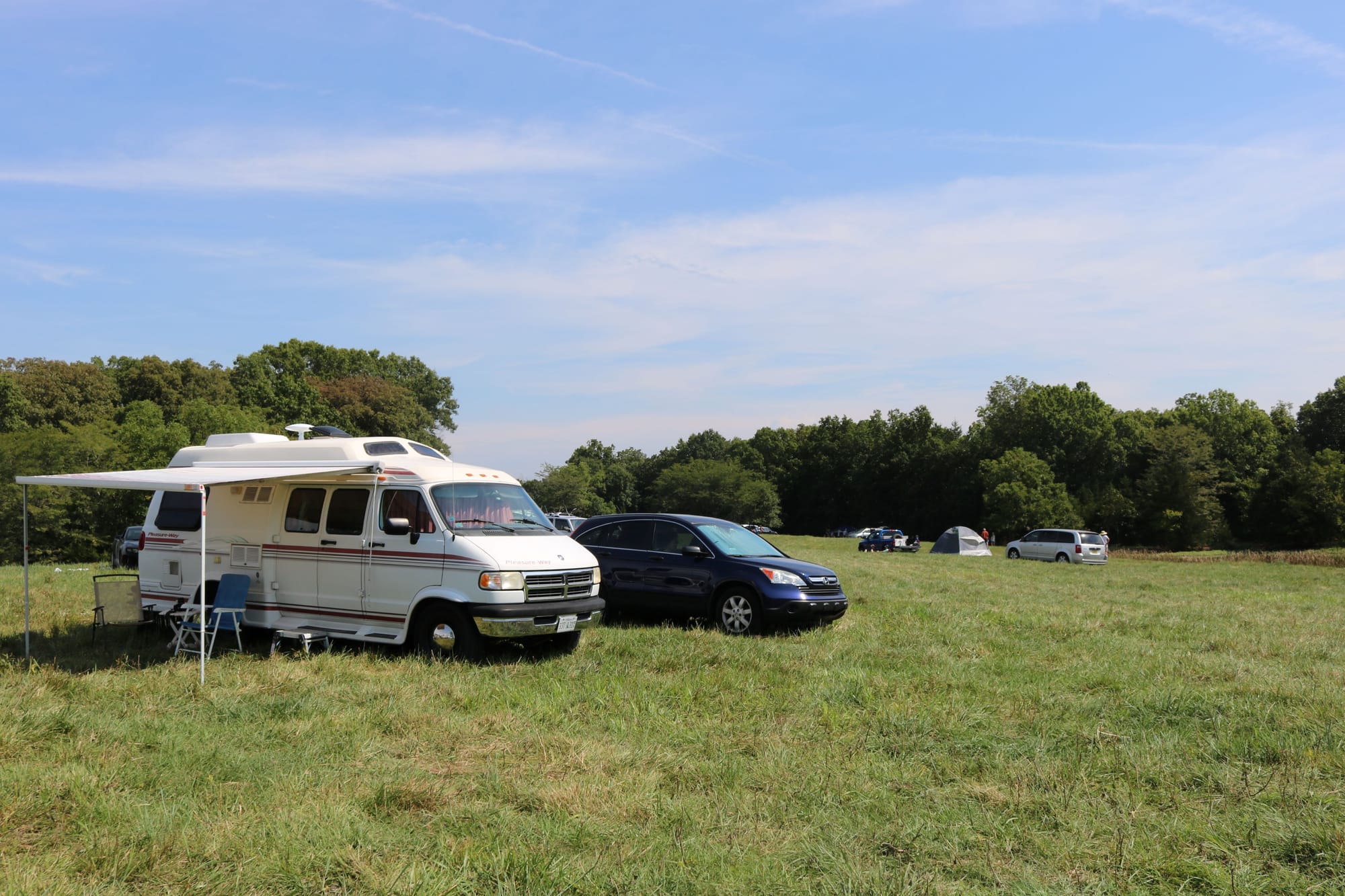
Norris helped his fellow staff at the Mark Twain National Forest welcome overflow visitors from nearby communities who were looking for a place to see the eclipse but were unable to find room in the towns. In many cases, these visitors had no idea they were near a national forest.
“It was a great opportunity for us to introduce the forest, since many of the people who came to us weren’t even aware that there was a Mark Twain National Forest,” he explains.
That theme of using the eclipse as an opportunity to introduce the public to a side of the Forest Service they might not be as familiar with is a powerful motivator for the national forests and grasslands in the path of totality. Just as the eclipse itself is a once-in-a-lifetime opportunity, so is the event a once-in-a-lifetime opportunity to make people aware of their national forests and grasslands.
“We’ve really put our heart and soul into making the forest ready, because we want our visitors to have the best time they can,” Stoffregen says. “This is the kind of event that makes core memories, and we’re excited to be part of those memories.”
Adds Norris, “We know that, if folks have a meaningful and rewarding experience with our forests and the communities we serve for the eclipse, they’re likely to come back and get to know the forest on a deeper level.”
A Rare Opportunity
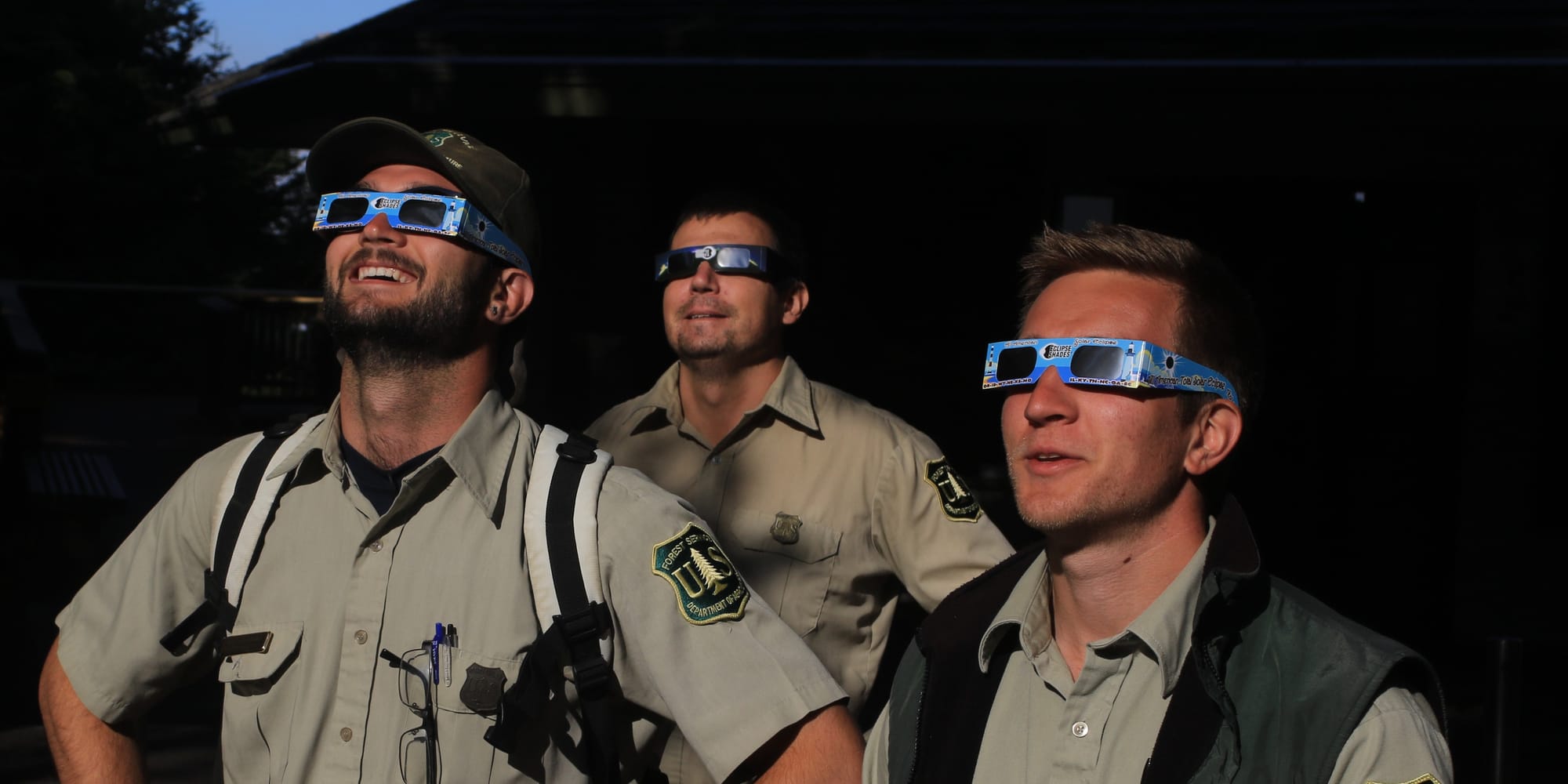
With all of the attention that the eclipse is drawing, it offers a rare opportunity for outreach and education for the forests and grasslands that will be hosting these many visitors. While people gather on these public lands and prepare to crane their heads skyward, maybe they’ll become aware of the sounds of the forest, catch a glance of an animal or bird, or even come to appreciate the natural splendor around them.
The national forests and grasslands are taking advantage of this rapt audience, from special eclipse-webpages educating visitors of the forests they’re soon to visit, to handouts prepared at the visitor centers on the landscape, and even having extra staff on hand to help visitors appreciate their trip to the forests.
And the opportunities aren’t just to engage with visitors.
“This event has been a fantastic opportunity to collaborate in a different way with our states, partners, communities, elected officials, schools and Tribal Governments,” observes Wood. “Sometimes we get so focused on delivering the mission that we forget that for this very reason and for these very visitors is why we do what we do, ensuring equitable and enjoyable access to our public lands and, as our motto says, ‘Caring for the Land and Serving People.’”
Norris agreed. “From the start, we took the approach of wanting to be part of the entire community’s enjoyment of this event. We’re playing a support role for local businesses and hoping that the visitors having a great time will also mean important economic development for the region. That way, everyone wins.”
Wood sees it the same way. “We’re all on the same team, and we’ve made connections with partners and stakeholders that will better align us for unlimited shared stewardship opportunities, and potentially even increase our capacity in the future,” she adds.
Don’t Let The Eclipse Overshadow The Forests
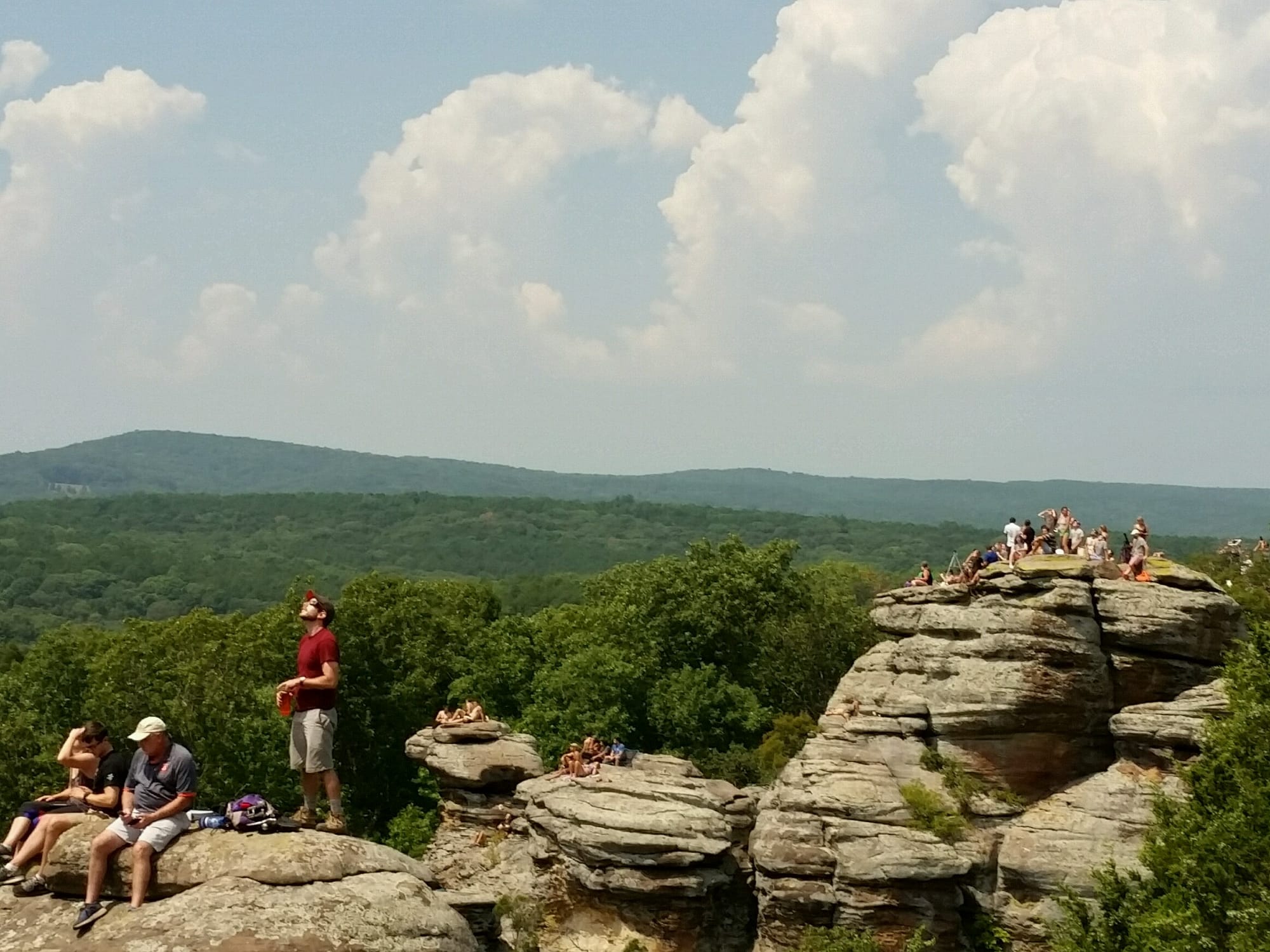
Don’t let the activities of the heavens eclipse the opportunities on the ground, though. Both Wood and Stoffregen stress that the national forests and national grasslands have much to offer beyond just the solar eclipse.
“The eclipse is happening just as spring is reaching the national forests,” says Stoffregen. “Trees and flowers will be blooming, birds will be migrating through, butterflies and bees will be out and about—it’s really a great time to be in the forests.”
Wood agrees, saying “A lot of people have been enjoying the forests in the run-up to the eclipse. In fact, we’ve had several people spend the entire month of March in the forest, moving from campsite to campsite, getting an idea of where the best place to see the eclipse is while also seeing all that the forest has to offer.”
Another alternative is to stay in the forest longer after the eclipse is over. After all, totality lasts under five minutes even at its peak.
“We’re encouraging people to spend more time in the forest if they can after the eclipse is over,” Stoffregen says. “After all, if you leave immediately, you’ll just be stuck in traffic, whereas if you wait a bit longer, even camping overnight, you can spend that time exploring the forest.”
“There’s so much to do in the forests, from hiking to hunting, canoeing to fishing, you certainly can’t do it in a single day,” says Norris. “We’re hoping that people get enough of a taste while visiting for the eclipse that they want to come back and see us again.”
Know Before You Go

If you want to share in the eclipse with us on a national forest or national grassland, there are some things to keep in mind. Check out Woodsy Owl’s tips for having a great eclipse viewing experience.
Each of the national forests and national grasslands in the path of totality have webpages where you can learn more, including how to get to the forest or grassland, as well as important safety information.
National forests and grasslands in the April 8, 2024, path of totality with approximate local times include:
- Caddo & LBJ National Grasslands, Texas
1:40 – 1:55 p.m. Central Daylight Time - Ouachita National Forest, Arkansas, Oklahoma
1:45 – 2:00 p.m. Central Daylight Time - Ozark-St. Francis National Forest, Arkansas
1:45 – 2:00 p.m. Central Daylight Time - Mark Twain National Forest, Missouri
1:50 – 2:05 p.m. Central Daylight Time - Shawnee National Forest, Illinois
1:55 – 2:10 p.m. Central Daylight Time - Hoosier National Forest, Indiana
3:00 – 3:15 p.m. Eastern Daylight Time
See you there!


